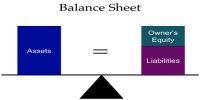Compensating balance
A minimum balance that must be maintained in an account. The compensating balance is often used to offset a portion of the cost that a bank faces when extending a loan or credit to an individual or business, and is usually calculated as a percentage of the loan outstanding. The account where the funds are held are typically non-interest bearing, and the bank is free to use the money in other investment opportunities.
Compensating balance reported:
Step 1
Review the loan application to find the principal amount of your loan, the stated interest rate of the loan, and the amount’of the necessary compensating balance.
Step 2
Multiply the loan principal by the statedinterest rate to calculate the nominal interest ‘clue on the loan. A $100,000 loan with a 5 percent interest rate would have nominal interest of $5,000.
Step 3
Record the compensatory balance required from your loan. The bank will record the necessary compensatory balance on your loan application.
Step 4
Subtract the compensatory balance from the total principal to calculate the available balance. If your total loan is for $100,000 and the compensatory balance is $5000 your available balance is $95,000.
Step 5
Divide the nominal interest due by the available principal to calculate the effective interest rate of your compensatory balance installment loan.













